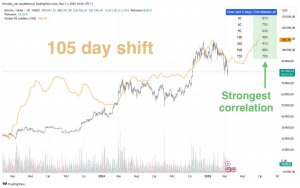A Looming Recession in Three Charts

As economic landscapes ebb and flow, seasoned analysts often turn to a trio of key indicators to decipher the cryptic messages of a potential recession. These markers, when synchronized, form a tapestry that can foretell economic downturns. Let’s delve into the three critical factors that often align on the road to a recession.
1. Yield Curve Inversion Normalizing
One of the most closely watched indicators is the yield curve. When short-term interest rates exceed long-term rates, a yield curve inversion occurs. Historically, such inversions precede recessions. However, the normalization of the yield curve, where longer-term rates start to rise again after inversion, is a nuanced signal. It suggests that the acute economic stress that prompted the inversion is potentially receding. Analysts closely monitor the pace and extent of this normalization to gauge the economy’s resilience.

2. Fed Funds Rate Decreases After a Spike
Central banks, particularly the U.S. Federal Reserve, play a pivotal role in shaping economic trajectories. When the Fed Funds rate experiences a significant spike, often as a response to inflationary pressures or overheating, a subsequent decrease can signal concerns about economic slowdown. This phenomenon is akin to the central bank applying the economic brakes after a period of robust growth. Analysts interpret this as an attempt to steer the economy away from potential overheating, but it also raises the specter of a looming recession. The rate at which the Fed adjusts this key interest rate post-spike is a crucial element in the recessionary calculus.

3. Rising Unemployment Rate
Employment figures are a cornerstone of economic health. When the unemployment rate, which typically lags behind other indicators, starts to ascend after a period of decline, it sets off alarm bells. Rising unemployment suggests a contraction in economic activity, as businesses may be trimming their workforce in response to reduced demand or economic uncertainty. This factor, when coupled with other recessionary indicators, completes a troubling trifecta.

Navigating the Economic Crossroads:
While each of these indicators holds significance on its own, it’s the convergence and alignment of these signals that command attention. Investors, policymakers, and businesses alike scrutinize these factors to make informed decisions and navigate the challenging terrain of an impending recession. It’s crucial to note that economic indicators are not foolproof crystal balls; rather, they offer valuable insights into the complex interplay of forces shaping our financial landscape.
As we decipher the economic runes, understanding the intricate dance of yield curves, interest rates, and employment figures provides a compass for prudent decision-making in an ever-changing economic climate.
Sources
U.S. Bureau of Labor Statistics. “Civilian Unemployment Rate.” Bureau of Labor Statistics, www.bls.gov/charts/employment-situation/civilian-unemployment-rate.htm.
GuruFocus. “Yield Curve.” GuruFocus, www.gurufocus.com/yield_curve.php.
Federal Reserve Economic Data (FRED). “Graph Landing.” Federal Reserve Economic Data (FRED), fred.stlouisfed.org/graph/graph-landing.php.





